Origins and development
Music hall in London had its origins in the 18th century. It grew with the entertainment provided in the new style saloon bars of public houses during the 1830s. These venues replaced earlier semi-rural amusements provided by fairs and suburban pleasure gardens such as Vauxhall Gardens and the Cremorne Gardens. These latter became subject to urban development and became fewer and less popular.
The saloon was a room where for an admission fee or a greater price at the bar, singing, dancing, drama or comedy was performed. The most famous London saloon of the early days was the Grecian Saloon, established in 1825, at The Eagle (a former tea-garden), 2 Shepherdess Walk, off the City Road in east London.[10] According to John Hollingshead, proprietor of the Gaiety Theatre, London (originally the Strand Music Hall), this establishment was "the father and mother, the dry and wet nurse of the Music Hall". Later known as the Grecian Theatre, it was here that Marie Lloyd made her début at the age of 14 in 1884. It is still famous because of an English nursery rhyme, with the somewhat mysterious lyrics:
Another famous "song and supper" room of this period was Evans Music-and-Supper Rooms, 43 King Street, Covent Garden, established in the 1840s by W.H. Evans. This venue was also known as 'Evans Late Joys' – Joy being the name of the previous owner. Other song and supper rooms included the Coal Hole in The Strand, the Cyder Cellars in Maiden Lane, Covent Garden and the Mogul Saloon in Drury Lane.
The music hall as we know it developed from such establishments during the 1850s and were built in and on the grounds of public houses. Such establishments were distinguished from theatres by the fact that in a music hall you would be seated at a table in the auditorium and could drink alcohol and smoke tobacco whilst watching the show. In a theatre, by contrast, the audience was seated in stalls and there was a separate bar-room. An exception to this rule was the Britannia Theatre, Hoxton (1841) which somehow managed to evade this regulation and served drinks to its customers. Though a theatre rather than a music hall, this establishment later hosted music hall variety acts.
Early music halls
The establishment often regarded as the first true music hall was the Canterbury, 143 Westminster Bridge Road, Lambeth built by Charles Morton, afterwards dubbed "the Father of the Halls", on the site of a skittle alley next to his pub, the Canterbury Tavern. It opened on 17 May 1852 and was described by the musician and author Benny Green as being "the most significant date in all the history of music hall". The hall looked like most contemporary pub concert rooms, but its replacement in 1854 was of then unprecedented size. It was further extended in 1859, later rebuilt as a variety theatre and finally destroyed by German bombing in 1942.
Another early music hall was The Middlesex, Drury Lane (1851). Popularly known as the 'Old Mo', it was built on the site of the Mogul Saloon. Later converted into a theatre it was demolished in 1965. The New London Theatre stands on its site.
Several large music halls were built in the East End. These included the London Music Hall, otherwise known as The Shoreditch Empire, 95–99 Shoreditch High Street, (1856–1935). This theatre was rebuilt during 1894 by Frank Matcham, the architect of the Hackney Empire. Another in this area was the Royal Cambridge Music Hall, 136 Commercial Street (1864–1936). Designed by William Finch Hill (the designer of the Britannia theatre in nearby Hoxton), it was rebuilt after a fire in 1898.
The construction of Weston's Music Hall, High Holborn (1857), built up on the site of the Six Cans and Punch Bowl Tavern by the licensed victualler of the premises, Henry Weston, signalled that the West End was fruitful territory for the music hall. During 1906 it was rebuilt as a variety theatre and renamed as the Holborn Empire. It was closed as a result of German action in the Blitz on the night of 11–12 May 1941 and the building was pulled down in 1960. Significant West End music halls include:
- The Oxford Music Hall, 14/16 Oxford Street (1861) – built on the site of an old coaching inn called the Boar and Castle by Charles Morton, the pioneer music hall developer of The Canterbury, who with this development brought music hall to the West End. Demolished in 1926.
- The London Pavilion (1861). Facade of 1885 rebuild still extant.
- The Alhambra, Leicester Square (1860), in the former premises of the London Panopticon. This sophisticated venue was noted for its alluring corps de ballet and was a focal point for West End pleasure seekers. It was demolished in 1936.
Other large suburban music halls included:
- The Old Bedford, 93–95 High Street, Camden Town (1861). Built on the site of the tea gardens of a pub called the Bedford Arms. The Bedford was a favourite haunt of the artists known as the Camden Town Group headed by Walter Sickert, who featured interior scenes of music halls in his paintings, including one entitled 'Little Dot Hetherington at The Old Bedford'. The Old Bedford was demolished in 1969.
- Collins', Islington Green (1862). Opened by Sam Collins, in 1862, as the Lansdowne Music Hall, converting the pre-existing Lansdowne Arms public house, it was renamed as Collins' Music Hall in 1863. It was colloquially known as 'The Chapel on the Green'. Collins was a star of his own theatre, singing mostly Irish songs specially composed for him. It closed in 1956, after a fire, but the street front of the building still survives (see below).
- Deacons in Clerkenwell (1862).
A noted music hall entrepreneur of this time was Carlo Gatti who built a music hall, known as Gatti's, at Hungerford Market in 1857. He sold the music hall to South Eastern Railway in 1862, and the site became Charing Cross railway station. With the proceeds from selling his first music hall, Gatti acquired a restaurant in Westminster Bridge Road, opposite The Canterbury music hall. He converted the restaurant into a second Gatti's music hall, known as "Gatti's-in-the-Road", in 1865. It later became a cinema. The building was badly damaged in the Second World War, and was demolished in 1950. In 1867, he acquired a public house in Villiers Street named "The Arches", under the arches of the elevated railway line leading to Charing Cross station. He opened it as another music hall, known as "Gatti's-in-The-Arches". After his death his family continued to operate the music hall, known for a period as the Hungerford or Gatti's Hungerford Palace of Varieties.
It became a cinema in 1910, and the Players' Theatre in 1946.
By 1865, there were 32 music halls in London seating between 500 and 5,000 people plus an unknown, but large, number of smaller venues.
In 1878, numbers peaked, with 78 large music halls in the metropolis and 300 smaller venues. Thereafter numbers declined due to stricter licensing restrictions imposed by the Metropolitan Board of Works and LCC, and because of commercial competition between popular large suburban halls and the smaller venues, which put the latter out of business.
Variety theatre
A new era of variety theatre was developed by the rebuilding of the London Pavilion in 1885. Contemporary accounts noted:
One of the most famous of these new palaces of pleasure in the West End was the Empire, Leicester Square, built as a theatre in 1884 but acquiring a music hall licence in 1887. Like the nearby Alhambra this theatre appealed to the men of leisure by featuring alluring ballet dancers and had a notorious promenade which was the resort of courtesans. Another spectacular example of the new variety theatre was the Tivoli in the Strand built 1888–90 in an eclectic neo-Romanesque style with Baroque and Moorish-Indian embellishments. "The Tivoli" became a brand name for music-halls all over the British Empire.[26] During 1892, the Royal English Opera House, which had been a financial failure in Shaftesbury Avenue, applied for a music hall licence and was converted by Walter Emden into a grand music hall and renamed the Palace Theatre of Varieties, managed by Charles Morton. Denied by the newly created LCC permission to construct the promenade, which was such a popular feature of the Empire and Alhambra, the Palace compensated in the way of adult entertainment by featuring apparently nude women in tableaux vivants, though the concerned LCC hastened to reassure patrons that the girls who featured in these displays were actually wearing flesh-toned body stockings and were not naked at all.
One of the grandest of these new halls was the Coliseum Theatre built by Oswald Stoll in 1904 at the bottom of St Martin's Lane. This was followed by the London Palladium (1910) in Little Argyll Street.
Both were designed by the prolific Frank Matcham. As music hall grew in popularity and respectability, and as the licensing authorities exercised ever firmer regulation,[31] the original arrangement of a large hall with tables at which drink was served, changed to that of a drink-free auditorium. The acceptance of music hall as a legitimate cultural form was established by the first Royal Variety Performance before King George V during 1912 at the Palace Theatre. However, consistent with this new respectability the best-known music hall entertainer of the time, Marie Lloyd, was not invited, being deemed too "saucy" for presentation to the monarchy.
'Music Hall War' of 1907
The development of syndicates controlling a number of theatres, such as the Stoll circuit, increased tensions between employees and employers. On 22 January 1907, a dispute between artists, stage hands and managers of the Holborn Empire worsened. Strikes in other London and suburban halls followed, organised by the Variety Artistes' Federation. The strike lasted for almost two weeks and was known as the Music Hall War.[33] It became extremely well known, and was advocated enthusiastically by the main spokesmen of the trade union and Labour movement – Ben Tillett and Keir Hardie for example. Picket lines were organized outside the theatres by the artistes, while in the provinces theatre management attempted to oblige artistes to sign a document promising never to join a trade union.
The strike ended in arbitration, which satisfied most of the main demands, including a minimum wage and maximum working week for musicians.
Several music hall entertainers such as Marie Dainton, Marie Lloyd, Arthur Roberts, Joe Elvin and Gus Elen were strong advocates of the strike, though they themselves earned enough not to be concerned personally in a material sense. Lloyd explained her advocacy:
Recruiting
World War I may have been the high-water mark of music hall popularity. The artists and composers threw themselves into rallying public support and enthusiasm for the war effort. Patriotic music hall compositions such as "Keep the Home Fires Burning" , "Pack up Your Troubles", "It's a Long Way to Tipperary" and "We Don't Want to Lose You (but we think you ought to Go)", were sung by music hall audiences, and sometimes by soldiers in the trenches.
Many songs promoted recruitment ("All the boys in khaki get the nice girls", 1915); others satirised particular elements of the war experience. "What did you do in the Great war, Daddy" criticised profiteers and slackers; Vesta Tilley's "I've got a bit of a blighty one" showed a soldier delighted to have a wound just serious enough to be sent home. The rhymes give a sense of grim humour (When they wipe my face with sponges / and they feed me on blancmanges / I'm glad I've got a bit of a blighty one).
Tilley became more popular than ever during this time, when she and her husband, Walter de Frece, managed a military recruitment drive. In the guise of characters like 'Tommy in the Trench' and 'Jack Tar Home from Sea', Tilley performed songs such as "The army of today's all right" and "Jolly Good Luck to the Girl who Loves a Soldier". This is how she got the nickname Britain's best recruiting sergeant – young men were sometimes asked to join the army on stage during her show. She also performed in hospitals and sold war bonds. Her husband was knighted in 1919 for his own services to the war effort, and Tilley became Lady de Frece.
Once the reality of war began to sink home, the recruiting songs all but disappeared – the Greatest Hits collection for 1915 published by top music publisher Francis and Day contains no recruitment songs. After conscription was brought in 1916, songs dealing with the war spoke mostly of the desire to return home. Many also expressed anxiety about the new roles women were taking in society.
Decline
Music hall continued during the interwar period, but no longer as the single dominant form of popular entertainment in Britain. The improvement of cinema, the development of radio, and the cheapening of the gramophone damaged its popularity greatly. It now had to compete with jazz, swing and big band dance music. Licensing restrictions also changed its character.
In 1914, the London County Council (LCC) enacted that drinking be banished from the auditorium into a separate bar and during 1923 even the separate bar was abolished by parliamentary decree. The exemption of the theatres from this latter act prompted some critics to denounce this legislation as an attempt to deprive the working classes of their pleasures, as a form of social control, whilst sparing the supposedly more responsible upper classes who patronised the theatres (though this could be due to the licensing restrictions brought about due to the Defence of the Realm Act 1914, which also applied to public houses as well). Even so, the music hall gave rise to such major stars as George Formby, Gracie Fields, Max Miller, Will Hay, and Flanagan and Allen during this period.
In the early 1950s, rock and roll, whose performers initially topped music hall bills, attracted a young audience who had little interest in the music hall acts while driving the older audience away. The final demise was competition from television, which grew very popular after the Queen's coronation was televised. Some music halls tried to retain an audience by putting on striptease acts. In 1957, the playwright John Osborne delivered this elegy:
Moss Empires, the largest British music hall chain, closed the majority of its theatres in 1960, closely followed by the death of music hall stalwart Max Miller in 1963, prompting one contemporary to write that: "Music-halls ... died this afternoon when they buried Max Miller". Miller himself had sometimes said that the genre would die with him. Many music hall performers, unable to find work, fell into poverty; some did not even have a home, having spent their working lives living in digs between performances.
Stage and film musicals, however, continued to be influenced by the music hall idiom, including Oliver!, Dr Dolittle and My Fair Lady. The BBC series The Good Old Days, which ran for thirty years, recreated the music hall for the modern audience, and the Paul Daniels Magic Show allowed several speciality acts a television presence from 1979 to 1994. Aimed at a younger audience, but still owing a lot to the music hall heritage, was the late '70s series The Muppet Show.
Music halls of Paris
The music hall was first imported into France in its British form in 1862, but under the French law protecting the state theatres, performers could not wear costumes or recite dialogue, something only allowed in theaters. When the law changed in 1867, the Paris music hall flourished, and a half-dozen new halls opened, offering acrobats, singers, dancers, magicians, and trained animals. The first Paris music call built specially for that purpose was the Folies-Bergere (1869); it was followed by the Moulin Rouge(1889), the Alhambra (1866), the first to be called a music hall, and the Olympia (1893). The Printania (1903) was a music-garden, open only in summer, with a theater, restaurant, circus, and horse-racing. Older theaters also transformed themselves into music halls, including the Bobino (1873), the Bataclan (1864), and the Alcazar (1858). At the beginning, music halls offered dance reviews, theater and songs, but gradually songs and singers became the main attraction.
Paris music halls all faced stiff competition in the interwar period from the most popular new form of entertainment, the cinema. They responded by offering more complex and lavish shows. In 1911, the Olympia had introduced the giant stairway as a set for its productions, an idea copied by other music halls. The singer Mistinguett made her debut the Casino de Paris in 1895 and continued to appear regularly in the 1920s and 1930s at the Folies Bergère, Moulin Rouge and Eldorado. Her risqué routines captivated Paris, and she became one of the most highly-paid and popular French entertainers of her time.
One of the most popular entertainers in Paris during the period was the American singer Josephine Baker. Baker sailed to Paris, France. She first arrived in Paris in 1925 to perform in a show called "La Revue Nègre" at the Théâtre des Champs-Élysées. ]She became an immediate success for her erotic dancing, and for appearing practically nude on stage. After a successful tour of Europe, she returned to France to star at the Folies Bergère. Baker performed the 'Danse sauvage,' wearing a costume consisting of a skirt made of a string of artificial bananas.
The music-halls suffered growing hardships in the 1930s. The Olympia was converted into a movie theater, and others closed. Others continued to thrive. In 1937 and 1930, the Casino de Paris presented shows with Maurice Chevalier, who had already achieved success as an actor and singer in Hollywood.
In 1935, a twenty-year old singer named Édith Piaf was discovered in the Pigalle by nightclub owner Louis Leplée, whose club, Le Gerny, off the Champs-Élysées, was frequented by the upper and lower classes alike. He persuaded her to sing despite her extreme nervousness. Leplée taught her the basics of stage presence and told her to wear a black dress, which became her trademark apparel. Leplée ran an intense publicity campaign leading up to her opening night, attracting the presence of many celebrities, including Maurice Chevalier. Her nightclub appearance led to her first two records produced that same year, and the beginning of a legendary career.
Competition from movies and television largely brought an end to the Paris music hall. However, a few still flourish, with tourists as their primary audience. Major music halls include the Folies-Bergere, Crazy Horse Saloon, Casino de Paris, Olympia, and Moulin Rouge.
History of the songs
The musical forms most associated with music hall evolved in part from traditional folk song and songs written for popular drama, becoming by the 1850s a distinct musical style. Subject matter became more contemporary and humorous, and accompaniment was provided by larger house-orchestras as increasing affluence gave the lower classes more access to commercial entertainment and to a wider range of musical instruments, including the piano. The consequent change in musical taste from traditional to more professional forms of entertainment arose in response to the rapid industrialisation and urbanisation of previously rural populations during the Industrial Revolution. The newly created urban communities, cut off from their cultural roots, required new and readily accessible forms of entertainment.
Music halls were originally tavern rooms which provided entertainment, in the form of music and speciality acts, for their patrons. By the middle years of the nineteenth century, the first purpose-built music halls were being built in London. The halls created a demand for new and catchy popular songs that could no longer be met from the traditional folk song repertoire. Professional songwriters were enlisted to fill the gap.
The emergence of a distinct music hall style can be credited to a fusion of musical influences. Music hall songs needed to gain and hold the attention of an often jaded and unruly urban audience. In America, from the 1840s, Stephen Foster had reinvigorated folk song with the admixture of Negro spiritual to produce a new type of popular song. Songs like "Old Folks at Home" (1851) and "Oh, Dem Golden Slippers" spread round the globe, taking with them the idiom and appurtenances of the minstrel song. Other influences on the rapidly developing music hall idiom were Irish and European music, particularly the jig, polka, and waltz.
Typically, a music hall song consists of a series of verses sung by the performer alone, and a repeated chorus which carries the principal melody, and in which the audience is encouraged to join.
In Britain, the first music hall songs often promoted the alcoholic wares of the owners of the halls in which they were performed. Songs like "Glorious Beer", and the first major music hall success, Champagne Charlie (1867) had a major influence in establishing the new art form. The tune of "Champagne Charlie" became used for the Salvation Army hymn "Bless His Name, He Sets Me Free" (1881). When asked why the tune should be used like this, William Booth is said to have replied "Why should the devil have all the good tunes? "The people the Army sought to save, knew nothing of the hymn tunes or gospel melodies used in the churches, but 'the music hall had been their melody school.'"
By the 1870s, the songs were free of their folk music origins, and particular songs also started to become associated with particular singers, often with exclusive contracts with the songwriter, just as many pop songs are today. Towards the end of the style the music became influenced by ragtime and jazz, before being overtaken by them.
Music hall songs were often composed with their working class audiences in mind. Songs like "My Old Man (Said Follow the Van)'", "Knocked 'em in the Old Kent Road", and Waiting at the Church expressed in melodic form situations with which the urban poor were very familiar. Music hall songs could be romantic, patriotic, humorous or sentimental, as the need arose. The most popular music hall songs became the basis for the pub songs of the typical Cockney "knees up".
Although a number of songs show a sharply ironic and knowing view of working class life, there were, too, those which were repetitive, derivative, written quickly and sung to make a living rather than a work of art.
Famous music hall songs
- "Any Old Iron" (Charles Collins; Terry Sheppard) sung by Harry Champion.
- "Belgium Put the Kibosh on the Kaiser" (Alf Ellerton) sung by Mark Sheridan.
- "Boiled Beef and Carrots" (Charles Collins and Fred Murray) sung by Harry Champion.
- "The Boy I Love is Up in the Gallery" (George Ware) sung by Nelly Power, and Marie Lloyd.
- "Burlington Bertie from Bow" (William Hargreaves) sung by Ella Shields.
- "Daddy Wouldn't Buy Me a Bow Wow" (Joseph Tabrar) sung by Vesta Victoria.
- "Daisy Bell (Bicycle Built for Two)" (Harry Dacre) sung by Katie Lawrence.
- "Down at the Old Bull and Bush" (Harry von Tilzer; Andrew B. Sterling) sung by Florrie Forde.
- "Every Little Movement Has a Meaning Of Its Own" (J. C. Moore; Fred E. Cliffe) sung by Marie Lloyd; superior U.K. take on "Every Little Movement (Has a Meaning All Its Own)".
- "Good-bye-ee!" (R. P. Weston; Bert Lee) sung by Florrie Forde and Daisy Wood.
- "Has Anybody Here Seen Kelly?" (C. W. Murphy and Will Letters) sung by Florrie Forde.
- "Hello, Hello, Who's Your Lady Friend?" (Harry Fragson; Worton David; Bert Lee) sung by Mark Sheridan.
- "Hold Your Hand Out, Naughty Boy" (C. W. Murphy and Will Letters) sung by Florrie Forde.
- "I Belong to Glasgow", written and performed by Will Fyffe.
- "I Do Like to Be Beside the Seaside" (John A. Glover-Kind) sung by Mark Sheridan.
- "I Was A Good Little Girl" (Clifford F. Harris; James W. Tate) sung by Clarice Mayne and That.
- "If It Wasn't For The 'Ouses In Between" (George Le Brunn; Edgar Bateman) sung by Gus Elen.
- "I'm Henery the Eighth, I Am" (1911) (Fred Murray and Bert Weston) sung by Harry Champion.
- "It's a Bit of a Ruin That Cromwell Knocked About a Bit" (Harry Bedford; Terry Sullivan) sung by Marie Lloyd.
- "It's a Long Way to Tipperary" (1914) (Jack Judge and Harry Williams) sung by John McCormack.
- "Let's All Go Down the Strand" (Harry Castling and C. W. Murphy) sung by Charles R. Whittle.
- "Lily of Laguna" (Leslie Stuart) sung by Eugene Stratton, and later G. H. Elliott.
- "[[The Daring Young Man on the Flying Trapeze|The Man on the Flying Trapeze" (George Leybourne; Gaston Lyle; arr. Alfred Lee) sung by George Leybourne.
- "The Man Who Broke the Bank at Monte Carlo" (Fred Gilbert) sung by Charles Coborn.
- "My Old Dutch" (Albert Chevalier; Charles Ingle) sung by Albert Chevalier.
- "My Old Man (Said Follow the Van)" (Charles Collins and Fred W. Leigh) sung by Marie Lloyd.
- "Nellie Dean" (Henry W. Armstrong) sung by Gertie Gitana.
- "Oh, It's a Lovely War" (J. P. Long; Maurice Scott) sung by Ella Shields.
- "Oh! Mr Porter" (George Le Brunn and Thomas Le Brunn) sung by Marie Lloyd, and Norah Blaney.
- "Pack Up Your Troubles in Your Old Kit-Bag" (Felix Powell) sung by Florrie Forde.
- "Ta-ra-ra-boom-de-ay" (Harry J. Sayers) sung by Lottie Collins.
- "Waiting at the Church" (Henry E. Pether; Frank W. Leigh) sung by Vesta Victoria.
- "Where Did You Get That Hat?" (Joseph J. Sullivan, 1888; words rewritten 1901 by James Rolmaz[54]) sung by J. C. Heffron (1857-1934)
- "Who Were You With Last Night?" (Fred Godfrey; Mark Sheridan) sung by Mark Sheridan.



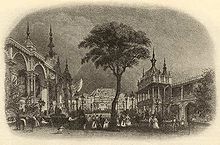
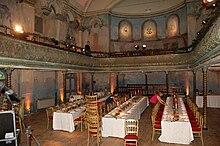
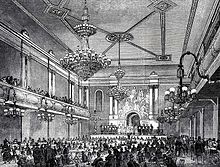


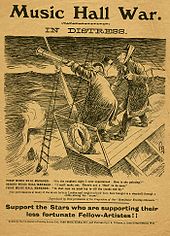
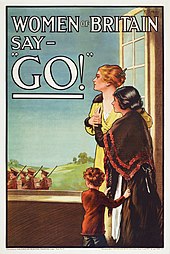






No comments:
Post a Comment